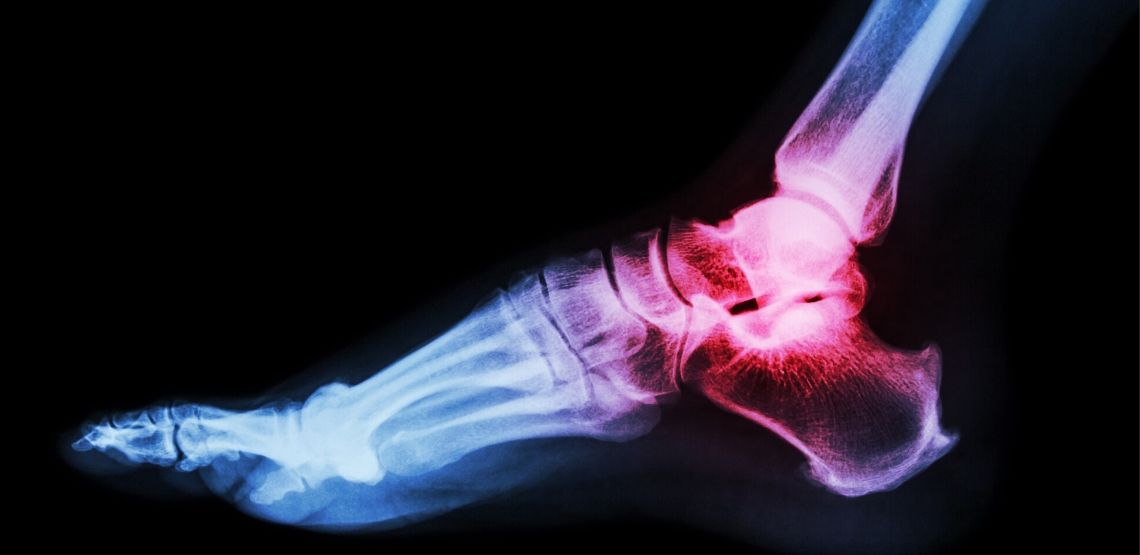Get the Gout Facts
Gout is an extremely painful condition that can be controlled with the correct treatment and lifestyle changes. Here is our guide to gout that will help you understand and treat the condition better.
If you have ever woken up with a big toe that feels as if it is on fire or have had another joint that is painful and inflamed, you could be suffering from gout.
What is Gout?
It is a type of inflammatory arthritis that may develop in some people who have high levels of uric acid in their blood. It is this uric acid that forms needle-like crystals in a joint, like that of the big toe. It can cause sudden and severe pain.
This condition is also associated with various other health conditions, some of which may be lifestyle illnesses. These include high blood pressure, diabetes, chronic kidney disease and cardiovascular disease.
Symptoms
Gout Attack symptoms include:
- Intense pain in the affected joint (usually the large joint of one of your big toes)
- Tenderness of the affected joint
- Redness of the affected joint
- Warmth and inflammation of the affected joint
- A limited range of motion as the gout progresses and you may not be able to move your joints like you normally do
It is important to note that where usually only one joint is affected during an attack, more joints may become affected as time passes and the correct treatment regime is not followed. The joint pain is usually most severe within the first four to 12 hours after it begins. The pain that is in one joint at first may become worse and worse until the severe pain is only replaced by milder pain.
Different Stages
Asymptomatic Hyperuricemia
During this stage of gout, there has not yet been an attack, but there are uric crystals forming in the joint and the uric acid levels in your blood is high.
Acute Gout
An attack happens when a trigger causes the uric acid levels in your blood to spike. This “jostles” the crystals of uric acid that formed in the joint, causing a sudden attack. These attacks usually start during the night, intensifying over the next eight to 12 hours.
Symptoms will lessen and go away in about seven to 10 days.
While some people only experience one attack, others may experience recurring attacks. In fact, 60% of people who have a gout attack will have another one within a year, while 84% may have another attack within three years of the first one.
Interval Gout
This is the time between attacks where there is no pain associated with the gout. However, this does not mean that it is gone and low-level inflammation may still damage your joints. This is also when symptoms should be managed through lifestyle changes. Medication may also be prescribed. Together, these may prevent future attacks and prevent it from becoming chronic.
Chronic Gout
When a person’s uric acid levels remain high over a number of years, gout attacks may become more frequent and the damage to joints may become more pronounced. This may lead to a loss of mobility. However, with proper management, chronic gout may be prevented.
Related Search Topics (Ads)
What are the Triggers?
Although uric acid normally dissolves in your blood, too much uric acid in the blood (either by your body producing too much or your kidneys excreting too little uric acid), can form the needle-like crystals that cause a gout attack.
However, uric acid levels may also spike after eating some of the foods which are high in purines (purines are broken down into uric acid by the body).
Foods which may cause uric acid levels to spike are:
- High-fructose corn syrup or foods containing high levels of this syrup
- Organ meats like liver
- Excessive consumption of alcohol
- Large portions of meat and seafood
- Naturally sweet fruit juices
- Sugar and desserts
- Salt
Remedies and Treatments
While there are foods that may cause a spike in uric acid levels, there are also foods that are encouraged to be eaten to help gout, along with certain lifestyle changes.
Foods that are encouraged for those suffering from gout attacks, include:
- Low-fat or non-fat dairy products
- Vegetables (research has shown that even asparagus, which contains high levels of purines, has very little or no impact on gout attacks)
- Whole-grain foods
- Plant oils
- Vitamin C supplements are also encouraged.
Lifestyle changes which can have a significant influence on the appearance of gout attacks, are:
- Weight loss
- No smoking
- Regular exercise
- A healthy diet that also limits the foods that can make uric acid levels spike
The need for daily medication for the treatment of gout is not yet certain, although it seems to be needed for those suffering from frequent gout attacks.
The American College of Rheumatology (ACR) issued its first guideline for prevention and treatment of gout in 2012, finding that gout can be kept under control if uric acid is levels are kept below 6.0mg/dL.
The ACR endorses higher doses of uric acid-lowering drugs to bring uric acid levels down below 6.0mg/dL only in certain circumstances and should also only be taken as prescribed by your doctor.
However, colchicine has been used for many years as a gout treatment. It is noted that colchicine only works in about one third of patients within 24 hours. For those suffering from infrequent attacks, nonsteroidal anti-inflammatory drugs (NSAIDs) may be taken to ease the symptoms of gout.
When to See a Doctor
Although you may not always need a doctor’s help when you are having a gout attack, there are times when you should see either a doctor or specialist. These include:
- Your first gout attack. Various other conditions can have similar symptoms, so it is important to make sure that it is, in fact, gout.
- High fever and chills. This may point to an infection and not a gout attack.
- Symptoms not getting better after 48 hours or not ending after about seven days. If there is no change in your condition after a few days, you should contact your doctor and ask them to suggest a different treatment.
Even if you do not see your doctor every time you have a gout attack, you should let them know about it and keep track of them yourself. You will then have a better idea of your condition’s history and your doctor can see if more tests are needed.
Article Resources
- Mayco Clinic (Gout)
- Mayo Clinic ( Free E-newsletter Subscribe to Housecall Our general interest e-newsletter keeps you up to date on a wide variety of health topics. Sign up now Gout diet: What's allowed, what's not)
- Arthritis Foundation (Gout Symptoms)
- Harvard Health Publishing (How to prevent gout attacks)
- Arthritis Foundation (What is Gout?)
- WebMD (Your Gout Triggers)


